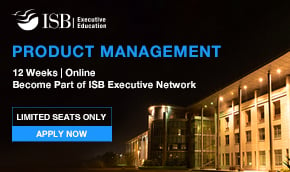Building the Perfect Resume for a Design Thinking Engineer’s Role

Business leaders worldwide are shifting their focus to modern technologies and processes that help grow their businesses, generate revenues, and increase their market share. The appeal to include innovative, modern, and automotive technologies in the ecosystem has led to the increased use of design thinking tools and techniques across various departments in business organizations. Moreover, embedding design and engineering into the central system help companies delight customers, impact the market, increase revenues, and build a successful brand.
Increased design and engineering processes are vicariously increasing the need for trained and skilled design-thinking professionals. As a result, companies are believed to be looking at recruiting design-thinking professionals with the skills of designers and the qualifications of an engineer. For that, they scrutinize every aspect of a design-thinking professional’s resume.
Therefore, if you want to make a successful career as a design-thinking engineer, you must have a built-to-last resume that helps attract quality work opportunities. Moreover, a well-designed and formatted design-thinking engineer’s resume highlights the strengths of the professionals like unique skills, certification courses taken to gain deep insight into the different designing processes, etc.
So, this article will explore the components of a design thinking engineer’s resume. We’ll also look at the growing importance of having a design thinking engineer resume for freshers and experienced professionals’ careers. But before that, let’s look at what is design thinking.
What Is Design Thinking, And Who Is A Design Thinking Engineer?
Design thinking is a unique combination of designing and engineering that incites innovation and delightful consumer experiences. Fundamentally, design thinking is a business ideology used by designers and engineers. While the former uses it for mapping different design stages, the latter uses it to understand the designer mindset and evoke creativity and innovation in their daily tasks.
Meanwhile, design thinking engineers are a vital part of the design thinking team of an organization. They are responsible for developing a perfect design for a company’s products or services that matches their objectives, product or service characteristics, and customer’s requirement. Moreover, design thinking engineers perform processes like prototyping, product modelling, etc.
Now that you know the meaning of design thinking, let’s emphasize the growing importance of design thinking engineer resume for experienced professionals and newcomers.
How Important Is A Resume In Design Thinking Engineer’s Career Growth?
Design-thinking engineers are trained professionals with great problem-solving skills and use a human-centred approach to designing products or services. It is believed that the demand for design-thinking engineers has increased in the few decades. Moreover, employers have shown interest in a human-centred and empathetic process in product development, which also accelerated the sudden influx of design-thinking engineers. Therefore, to gain a competitive advantage, it is imperative to have a well-designed resume.
In addition, there are many reasons for having a perfect design-thinking engineer resume for freshers and experienced professionals; here are some:
- Highlights your strengths like job-appropriate skills, educational qualifications, etc.
- Helps the hiring manager decide if you are the right fit for the company.
- Helps in quantifying your abilities and capabilities.
In the succeeding part of the article, we will look at the main components of a design thinking engineer’s resume that increase their chances of getting a job.
What Should Be Included In A Design Thinking Engineer’s Resume?
Experts believe a perfect resume for the design thinking engineer should have the right mixture of experience, skills, and qualifications. Moreover, to overshadow others, it is essential that you concentrate on the format of the resume that should resonate with the employers. And should have a formal tone that impresses the hiring managers. In addition, here are some other components of the design thinking engineer resume for experienced professionals and newcomers; check out:
1. Summary
A summary is an important part of the design thinking engineer’s resume. It lists essential information like your career objectives, personal details, contact information, and social media handles, all of which helps the employers under your better. It also helps them know your goals, work culture, and ethics, making it easy to decide if a candidate will be a perfect fit for the company. Here’s all that can be included in a design thinking engineer’s resume for freshers or experienced professionals:
- A few words that describe your previous job title and responsibilities
- Details about your social media handles
- Personal information like name, address, contact information, and professional email id
2. Educational qualification
Since design thinking engineer needs professional training to learn the fundamentals of designing and engineering, it is imperative to have a bachelor’s or master’s degree in design or a similar field. It prompts employers to consider you for the job. Moreover, it lays a strong foundation that helps candidates tackle difficult situations.
Furthermore, advanced courses help the candidates learn job-specific skills and gain deep insight into the difference between UI and UX design, universal design principles, etc. Here are some of the skills employers look for design thinking engineer’s resume:
- Basic knowledge of software like CAD, etc.
- Creating 3D and prototype models.
- Data analytics
- Mathematical skills
- Project management skills
The advent of e-learning has encouraged students to undertake different certification courses to learn the basics of design thinking. Emeritus India has partnered with Indian universities to offer the best design thinking courses online that will help accelerate your career.
3. Experience
Whether an experienced design thinking engineer or a fresher, every work opportunity adds to the value of the aspirant. Moreover, it helps them learn new skills to generate desirable results. Similarly, mentioning work experience increases your chances of attracting work opportunities. Because it helps employers evaluate your capabilities and check previous results to make future assumptions. Therefore, include it to get the job.




